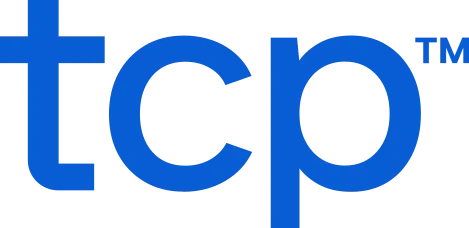When employee schedules don’t align with labor laws, you’ll have to deal with more than logistical headaches. One mistake — a missed rest period, unapproved overtime shift, or last-minute schedule change — can trigger a chain reaction of regulatory fines, employee complaints, union involvement, and even litigation.
Example: Let’s say a national retailer forgets to give workers their state-mandated two-week schedule notice. Suddenly, they’re looking at dozens of violations in a single payroll cycle, fines in the six figures, and a surge in attrition just before peak season.
This isn’t just a hypothetical. It’s the kind of risk many businesses face daily without even realizing it. Labor law compliance isn’t optional. But it’s also not impossible, especially when your system is working for you.
In this guide, we’ll unpack:
- The labor laws you need to know
- Why labor law compliance matters more than ever
- Where manual scheduling breaks down
- How employee scheduling software helps maintain compliance
- What to look for in a compliance-ready solution
The cost of non-compliance in employee scheduling
Labor law violations don’t just show up in court — they show up on your balance sheet, in your turnover rates, and across your operations. If your employee schedules aren’t built with compliance in mind, your business is already at risk
Financial
The U.S. Department of Labor collected more than $213 million in back wages for wage and hour violations in fiscal year 2024 alone. That number doesn’t account for local enforcement or class-action lawsuits under predictive scheduling laws.
Legal
Labor law violations don’t just lead to fines — they can damage your employer brand, derail operations, and create ongoing risk. Regulations have evolved to protect workers from unpredictable schedules, unsafe conditions, and unfair treatment, but responsibility for compliance often falls on already-stretched frontline managers.
Even honest mistakes can result in costly investigations or litigation.
Example: Predictive scheduling laws in cities like San Francisco and New York City require employers to give advance notice of work schedules, plus offer additional compensation for last-minute changes.
A boutique pet supply chain operating in both cities that fails to update its retail employee scheduling system could rack up thousands, or even hundreds of thousands, in penalties, legal costs, and lost trust with just one payroll cycle.
The impact is especially acute in labor-heavy industries where the margin for error is already tight. From lost productivity to costly legal battles, the ripple effects of non-compliance hurt.
Labor law compliance challenges by industry
Labor law compliance doesn’t hit every industry the same way, which is where many organizations get caught off guard. A rule that works for a tech startup might wreck operations in a hospital or warehouse.
Every industry faces unique scheduling risks, and the margin for error can be razor-thin when regulations, labor models, and staffing patterns collide. Although not limited to, here are a few examples of industry-specific compliance challenges:
Retail
Retailers frequently operate in states or cities with fair workweek laws. They also must account for minor labor laws, especially around school hours and shift lengths.
Many retail teams are made up of part-time workers, which introduces additional complexity with availability, scheduling equity, and break compliance during short shifts.
Healthcare
Healthcare organizations must often comply with union agreements that dictate specific shift rules, seniority scheduling, and rest periods between long or overnight shifts.
Credentials also matter — staff must be qualified, licensed, and compliant with training mandates. If a nurse without current CPR certification is scheduled for a patient-facing role, the liability escalates beyond regulatory to reputational and clinical risk.
Manufacturing
In manufacturing, compliance overlaps with safety mandates. Long shifts without proper rest increase the risk of accidents and fatigue.
The Occupational Safety and Health Administration (OSHA) expectations tie closely to scheduling practices, especially around rotating shifts and consecutive days worked. Employers must also track equipment-specific certifications, such as forklift or machinery operation clearance.
Hospitality
Hospitality employers juggle variable demand with seasonal and part-time staff, which makes scheduling fair and compliant particularly challenging.
Laws around tip credit eligibility, dual roles (e.g., server and host), and advance scheduling requirements in urban areas become a compliance minefield. Add in high turnover, and managers have to juggle daily rescheduling while still trying to stay within the law.
Key labor laws that impact employee scheduling
Labor law compliance isn’t one-size-fits-all — as federal, state, and local jurisdictions vary, so do the laws, with new rules being added regularly.
Fair Labor Standards Act (FLSA)
The FLSA is the federal foundation of scheduling law. It regulates minimum wage, overtime pay, and recordkeeping. Most non-exempt employees must receive overtime pay for hours worked beyond 40 in a workweek.
If your team clocks in early, works through breaks, or stays late without clocking out — and you don’t capture those hours — you’re exposed to risk. One of the most common compliance gaps is misclassifying employees or failing to document hours.
Predictive scheduling laws
Cities like San Francisco, New York City, Seattle, and Chicago have enacted fair workweek laws to protect employees from unpredictable schedules. Predictive scheduling refers to laws that require employers to give workers advance notice of their schedules, typically 7 to 14 days ahead.
Predictive scheduling laws are designed to protect employees from last-minute changes that disrupt their income, plans, or ability to manage responsibilities like childcare or education. For employers, it means scheduling needs to be proactive, not reactive, and with clear records to back it up.
These laws often require:
- Posting work schedules 7–14 days in advance
- Extra pay if shifts are changed with less than the required notice
- Offering employees newly available shifts before new hires are brought in
- Documented records for all scheduled communications
Oregon’s Fair Workweek Law, for example, applies to large retail, hospitality, and food service employers. It mandates advance schedule posting, employee input on availability, and rest periods between shifts. Failing to meet these requirements can lead to financial penalties and audit risk.
Meal & rest break laws
Some states have strict meal and rest period laws for employees who work over minimum hour thresholds.
In California, employees working over five hours are entitled to a 30-minute unpaid meal break and must receive additional paid breaks based on shift length. If these aren’t properly scheduled and documented — and especially if they’re missed or interrupted — employers may owe premium pay and face fines.
Washington state requires employers to provide a 30-minute meal break for shifts longer than five hours and a paid 10-minute rest break for every four hours worked. If a shift exceeds 10 hours, a second meal break must be offered. These breaks must be uninterrupted and on the clock where applicable, specifically for rest periods.
Relying on manual logs or verbal confirmation to document and enforce these breaks isn’t enough. Scheduling software must actively block noncompliant shifts and track when breaks are assigned and taken.
Fair scheduling and protected accommodations
Scheduling practices are about coverage, equity, and legal responsibility. In unionized workplaces, shift assignments are often governed by collective bargaining agreements (CBAs), which include seniority-based scheduling rules.
Beyond unions, many states and cities have local rules to protect workers from discriminatory or unfair scheduling practices. Employers are required to engage in a good-faith interactive process and cannot retaliate against workers for making such requests.
Federal law also plays a role. Under Title VII of the Civil Rights Act of 1964, employers are legally required to accommodate employee religious practices. This includes Sabbath observance or religious holidays, unless doing so would cause undue hardship.
Without recordkeeping and precise documentation for schedule change requests, employers can face legal compliance and even discrimination claim risks. Local and federal frameworks make it clear that fair scheduling isn’t just a best practice — employers need systems that track requests, preserve documentation, and consistently apply scheduling rules across their workforce.
Why manual employee scheduling creates labor law compliance risk
Manual scheduling processes are a recipe for failure with today’s complex compliance environment. Whether you’re using spreadsheets, handwritten rosters, or legacy scheduling tools, the margin for mistakes is simply too high.
Lack of audit trails
Consider audit trails — paper or static spreadsheets don’t track when shifts were created, modified, or accepted. That becomes a liability when a labor audit requires time-stamped proof.
Human error
Nevermind the system itself, manual updates are chock full of opportunities for human oversight. When you’re playing catchup with manual records, you’re exposing your organizations to claims you may not even know about until it’s too late:
- Missed overtime rules
- Forgotten break periods
- Unnoticed extra shifts
- Double booking shifts
- Fair scheduling violations
Reactivity and delayed inputs
Manual methods also limit real-time decision-making. When managers aren’t alerted to conflicts or rule violations as they build schedules, problems go unnoticed. And because there’s no built-in logic, compliance depends on memory and manual review.
Scalability
What works for a 20-person team in a single location falls apart when managing 200 employees across five cities with different local labor laws. Without automation, scheduling becomes a bottleneck, and compliance becomes guesswork.
How employee scheduling software helps maintain labor law compliance
The best scheduling software works like a sword and a shield — it keeps your operations moving forward and protected at the same time. It builds compliance directly into how you assign shifts, track hours, and manage rules, so legal requirements aren’t missed or left to chance.
Here’s how the right platform can take the guesswork and risk out of maintaining compliance.
Automating labor law rules
Modern platforms allow you to build in customer shift schedule rules based on shift length, job role, region, and even union contract terms.
Example: You can set the system to prevent an employee from working more than six hours without a 30-minute break, or to flag back-to-back shifts with less than the required rest time.
These settings aren’t optional either. They’re hard-coded compliance safeguards that eliminate reliance on memory or manager discretion.
Creating audit-ready documentation
If you’re ever subject to an audit or employee dispute, you’ll need more than a few screenshots. Software platforms automatically generate time-stamped, auditable logs that track every shift assignment, change, and acknowledgment.
These records become proof to show you acted in good faith and followed relevant laws.
Real-time alerts and visibility
Instead of letting scheduling mistakes happen in silence, quality software platforms trigger alerts as soon as a compliance conflict arises. Managers are proactively notified when they assign too many hours, miss a required break, or overlap shifts.
Real-time validation is essential in preventing unintentional violations before they impact payroll or operations.
Localized compliance templates
For employers operating in multiple jurisdictions, pre-loaded geo-specific compliance templates are essential. The best software partners track legal updates across the U.S. and globally, embedding local rules directly into your scheduling engine so you don’t have to keep up with every new ordinance.
Tying in time and attendance
Integrated time tracking systems close the loop.
You can compare scheduled shifts to actual clock-ins, calculate overtime with precision, and track whether breaks were taken and how long they lasted. This allows HR teams to reconcile payroll against compliance data with confidence.
What to look for in a labor law compliance-focused scheduling solution
Evaluating scheduling software through a compliance lens is critical, especially for employers operating across regions or industries with high legal exposure.
- Rules engine – The platform should allow you to configure custom rules for shift lengths, breaks, overtime triggers, and job qualifications. If these rules aren’t built into the logic of the tool, managers are left to interpret labor law themselves (you don’t want that risk)
- Automatic scheduling logs – These should show when employees posted, modified, or acknowledged shifts, with time stamps for every action. Logs are essential if a lawsuit arises or a regulator audits your business.
- Mobile functionality – Employees should be able to view schedules, request time off, and get notified of changes from anywhere. This helps maintain labor law compliance with notice rules and provides digital proof that workers were informed correctly.
- Consider unions – Software must accommodate contractual rules like seniority-based shift bids or required rest windows.
- Robust approval workflows – These give HR and compliance teams oversight of schedule exceptions before they become liabilities.
How employee scheduling software improved labor law compliance outcomes
We have scheduling and compliance tools that accomplish everything you’ve read so far. But you don’t have to take our word for it — these organizations put TCP’s Humanity scheduling and compliance tools to work and saw real results.
From public institutions to international retailers and emergency responders, our customers use TCP to prevent compliance challenges that cost them time, trust, and legal risk.
Here’s how they made the shift:
New Jersey Institute of Technology
As a public institution with a highly diverse workforce — including union employees, student workers, and salaried staff — New Jersey Institute of Technology (NJIT) needed a system to manage labor regulation complexity without bottlenecks.
After adopting TCP Software’s scheduling platform, NJIT was able to integrate job codes, labor rules, and policy exceptions directly into the scheduling engine. This gave managers real-time guidance on which employees could work which shifts and eliminated manual review of every assignment.
Scheduling decisions are now faster, clearer, and auditable. The risk of accidental labor violations, especially around overtime eligibility and classification, dropped significantly.
Cyprus Duty Free
Operating in an international airport under strict national labor laws, Cyprus Duty Free faced major pressure to provide employees with advance schedule notice and adequate time off.
Without a digital scheduling system, managers struggled to coordinate time-off requests and anticipate conflicts. Staff morale suffered, and legal exposure increased.
With TCP Software, Cyprus Duty Free overhauled its scheduling approach. Schedules are now published well in advance and employee leave requests are more transparent, with the platform automatically accounting for eligibility, required notice, and overlapping shifts.
Staff now have confidence in their time-off rights and managers aren’t guessing anymore — retention and trust have both improved, and compliance is no longer an administrative burden.
Gloucester County
For Gloucester EMS, scheduling wasn’t just about logistics but safety and legal protection. Emergency responders need to be licensed, certified, and rested before they ever step into a shift.
But without a centralized system, tracking credentials, certifications, and documentation was fragmented, exposing the agency to compliance gaps and inefficiencies.
TCP brought structure and security to their entire scheduling process — certifications are tied to employee profiles, and online documentation allows for 24/7 compliance record accessibility.
Now Gloucester EMS has strengthened both operational continuity and legal preparedness. They’ve created a more resilient system where labor law compliance isn’t just a checkbox, but a built-in part of every schedule that gets posted.
Labor law compliance isn’t optional, but it doesn’t have to be a guessing game
When it comes to employee scheduling, labor law compliance can’t be an afterthought. Violations happen fast, and they add up even quicker. But with the right tools and systems, you can maintain compliance, reduce legal risk, and build trust with your workforce.
Employee scheduling software designed for compliance gives you what manual systems can’t: transparency, automation, and peace of mind. From predictive scheduling to rest period enforcement and certification tracking, you’re covered shift to shift and day to day.
It’s not just about staying out of trouble. It’s about doing right by your people and running an organization ready for whatever comes next.
TCP Software’s employee scheduling, time, and attendance solutions are flexible and scalable to accommodate your organization and employees as you grow.
From TimeClock Plus, which automates even the most complex payroll calculations and leave management requests, to Humanity Schedule for dynamic employee scheduling that saves you time and money, we have everything you need to meet your organization’s needs, no matter how unique.
Plus, with Aladtec, we offer 24/7 public safety scheduling solutions for your hometown heroes.
Ready to learn how TCP Software takes the pain out of employee scheduling and time tracking? Speak with an expert today.



